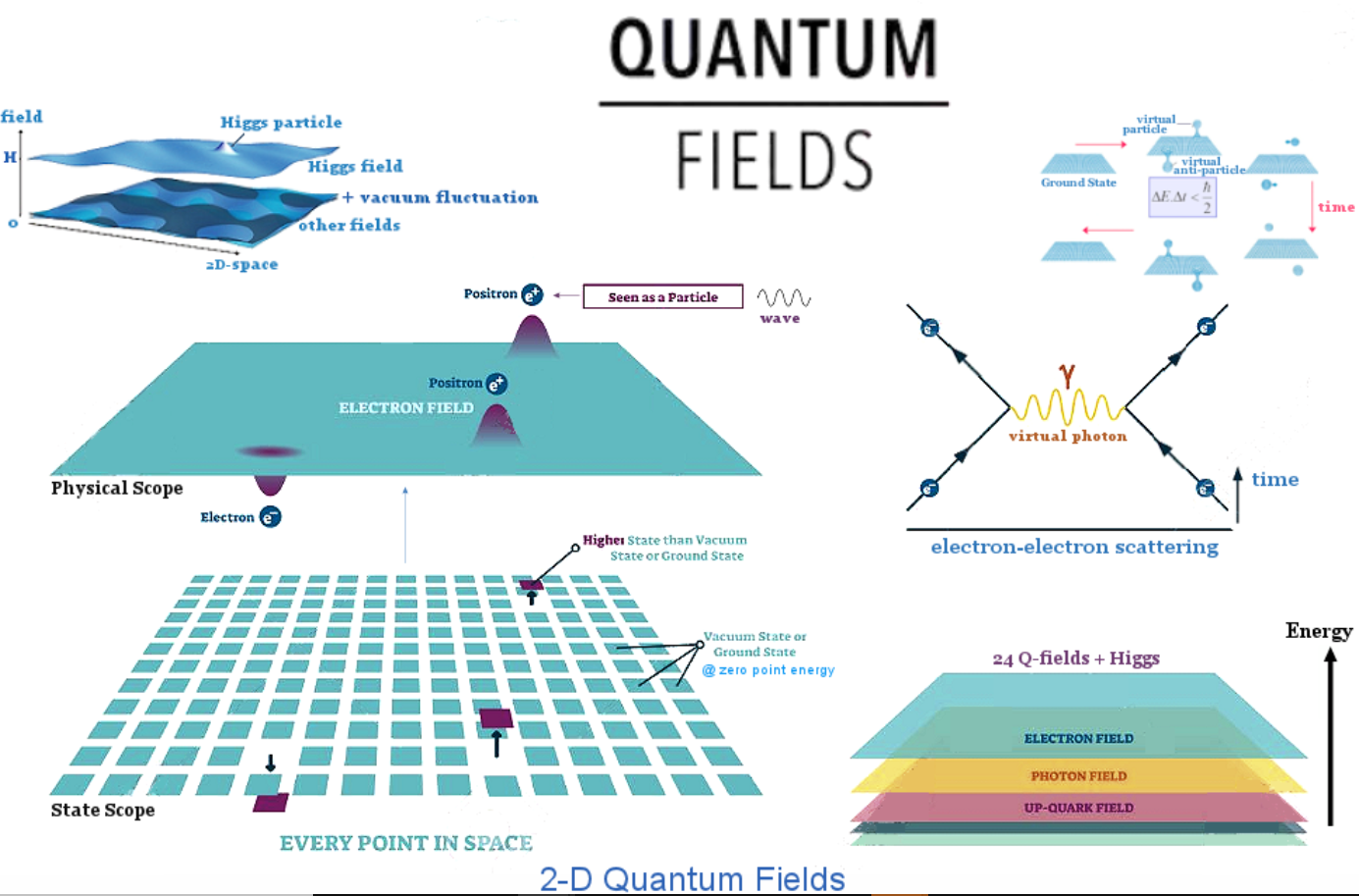QCD AND QUANTUM FIELD THEORY
Quantum field theory is a set of physical laws that combines relativity and quantum mechanics concepts to explain how subatomic particles interact with one another and behave in various force fields. Quantum chromodynamics, which represents the interactions of quarks and the strong force, and quantum electrodynamics, which describes the interactions of electrically charged particles and the electromagnetic force, are two examples of contemporary quantum field theories. Quantum field theories, which were created to explain particle physics phenomena like high-energy collisions where subatomic particles might be generated or destroyed, have also been used in other areas of physics.
Quantum electrodynamics (QED), which offers a thorough mathematical framework for projecting and comprehending the effects of electromagnetism on electrically charged matter at all energy levels, is the forerunner of quantum field theories. The emission and absorption of exchange particles known as photons are thought to be the source of electric and magnetic forces. Similar to how lake ripples are disturbances of the water, these can be thought of as electromagnetic field disturbances. In the right circumstances, photons can completely dissociate from charged particles, at which point they can be detected as light and other types of electromagnetic radiation. The same is true for particles like electrons, which are seen as perturbations of their own quantized fields. Quantum electrodynamics (QED)-based numerical predictions are within one part in 10 million of the experimental data in some cases.

Many physicists believe that theories resembling QED can explain other forces in nature, including the gravitational force and the strong and weak interactions that bind atomic nuclei together and cause radioactive beta decay, respectively. Gauge theories are the name given to all of these hypotheses. Exchange particles are used to mediate each of the forces, and these particles' characteristics can be used to distinguish between the various forces. For instance, the well-studied photon and the as-yet-undetected graviton, which serve as the exchange particles for electromagnetic and gravitational forces, respectively, work at vast distances.
Quantum field theories of these forces form the foundation of the current theoretical knowledge of the basic interactions of matter. However, work on creating a single, comprehensive field theory that accounts for all the forces is still ongoing. All the forces would be related by mathematical symmetry and share a common origin in such a unified theory. The simplest outcome would be that all the forces would have the same characteristics and that the observed variances would be explained by a process known as spontaneous symmetry breakdown. The electroweak theory, which unifies the electromagnetic and weak forces, has been created and has gained a great deal of experimental support. It is likely that the strong force can be incorporated into this idea. There are hypotheses that also take the gravitational force into account, but however, these are more conjectural.
